OVERVIEW
This stage from Melin Tregwynt to Abereiddy is one of the the most varied on the path. Rejoining the coast path you come to the site where the first telegraph cable between Wales and Ireand came ashore in 1866. The little port of Abercastle is an excellent place to stop with a packed lunch. Then come inland to Carreg Sampson, a Neolithic ‘cromlech’ or dolmen burial stone with sweeping views back to the sea and Garn Fawr. The path then takes you inland towards Trefin where there is a pub, café and excellent overnight accommodation at the Old Schoolhouse. At the far end of the village is Melin Trefin, a ruined corn mill that inspired a famous poem of the same name.
The grassy coast path route takes you into Porthgain harbour where the remains of Pembrokeshire’s industrial past have been replaced with art galleries, a fish restaurant and pub. The cliff-top walk is a riot of colour from wild-flowers in May and June. The isolated coves are frequented by seals especially during the pupping season in the early Autumn. This section of the Pembrokeshire Coast Path is under the care of the National Trust (they manage 60 miles of the path in total). Pause to look down to the Blue Lagoon, a previous host to the world cliff-diving championships, before continuing to the end of the stage at Abereiddy.
HIGHLIGHTS / PLACES OF INTEREST
Abermawr
Abermawr is a feast for the senses, with its pebble beach and wild seas often frequented by seals. It also has a fascinating history with Brunel’s attempt at creating a port here and the first transatlantic cables being laid here via Wexford.
Abereiddy
The final stretch of this stage from Porthgain to Abereiddy is very dramatic and wild, a magical place steeped in folklore and the life of early Celtic saints and the Green Islands of the Deep. It is a contrasting blend of wild beauty, lost industrial past and the atmosphere and spirituality of Celtic saints.
Before dropping down to the beach at Abereiddy, the clifftop walk takes you past the Blue Lagoon. Today it is known for its wild swimming and cliff diving into the deep blue waters below that gives the place its name. In the past this was a slate quarry that was abandoned and flooded in the early twentieth century. The remains of the quarrymen’s terraced homes can be seen near the public toilets on the left as you walk down to the beach at Abereiddy.
Porthgain
Following the coast path from Trefin takes you to the inlet and old harbour of Porthgain. On initial sight it looks like an ancient castle until closer inspection reveals that it is made of red bricks. This is, in fact, a legacy of Pembrokeshire’s short-lived industrial revolution where stone from the quarry at the top of the hill was used to fire bricks in the kilns at the dockside. Small coastal luggers would then have taken bricks to the growing industrial towns of south Wales, Bristol and beyond. The two white stone obelisks on the headlands either side of the harbour are a sort of ‘Victorian GPS’, guiding the ships safely into the harbour.
Though the brickworks and quarrying here that has long since passed you will now find a thriving harbour built around tourism and it is a good place for a meal at the Sloop or the Shed. The village is also home to art galleries and to excellent local ice-cream.
Trefin Village
Trefin is an active village with a fantastic hostel at the Old School House. The Ship Inn is also an excellent stop over for lunch or an evening meal. At the far end of the village is Melin Trefin. This abandoned corn mill was the inspiration for a famous poem in Welsh of the same name composed by William Williams who was also known as Archdruid Crwys:
Extract from Melin Trefin by William Williams:
Tonight the mill at Trefin,
That stands beside the foam,
Grinds nothing: the last pony
Has borne its last load home.
Carreg Samson
After crossing the footbridge and climbing some steep steps, just inland from here is Carreg Samson. This majestic burial tomb or cromlech is one of the finest Neolithic sites in Wales. Although local legend says thay that the Celtic Christian saint Samson set its capstone in place with his little finger, it pre-dates Sampson by some two and a half thousand years.
The ancient nature of the site invokes the poetry of another famous Pembrokeshire poet: Waldo Williams. There is no better place to recite his poem Cofio, which means remembrance in Welsh:
Extract from Remembrance by Waldo Williams:
One brief moment as the sun is setting,
One quiet moment as the night comes on
To bring to mind the things that are forgotten,
Lost now in the dust of time long gone.
Nearby Communities
Mathry
Inland from the route you have one of the earliest settlements of Pembrokeshire known as Mathry that sits on a hill overlooking both the coast and the Preseli Hills. The Church of the Holy Martyrs is in the heart of the village, and you will also find inscribed stones in the outer wall of the churchyard. There are regular buses to this village, the Farmers Arms pub serving Food & Drink and a Sanctuary location opposite the church at the Community Hall.
Llanrhian
Inland from here there is the community of Llanrhian that offers Sanctuary accommodation at the Church Hall opposite Llanrhian Church which is dedicated to St Rhian. Llanrhian church is of unusual architecture almost built around a lookout tower. There is a rarely seen inscribed marker at the corner footing of the church and the way the village is set out on the crossroads gives it a sense of many traveling and passing journeys going through here. Noted artist John Knap Fisher lived and worked just inland from here at Croesgoch. Fisher has widely documented the county’s parish churches, in particular the medieval Celtic churches predominant in the north of the county.

Melin Tregwynt
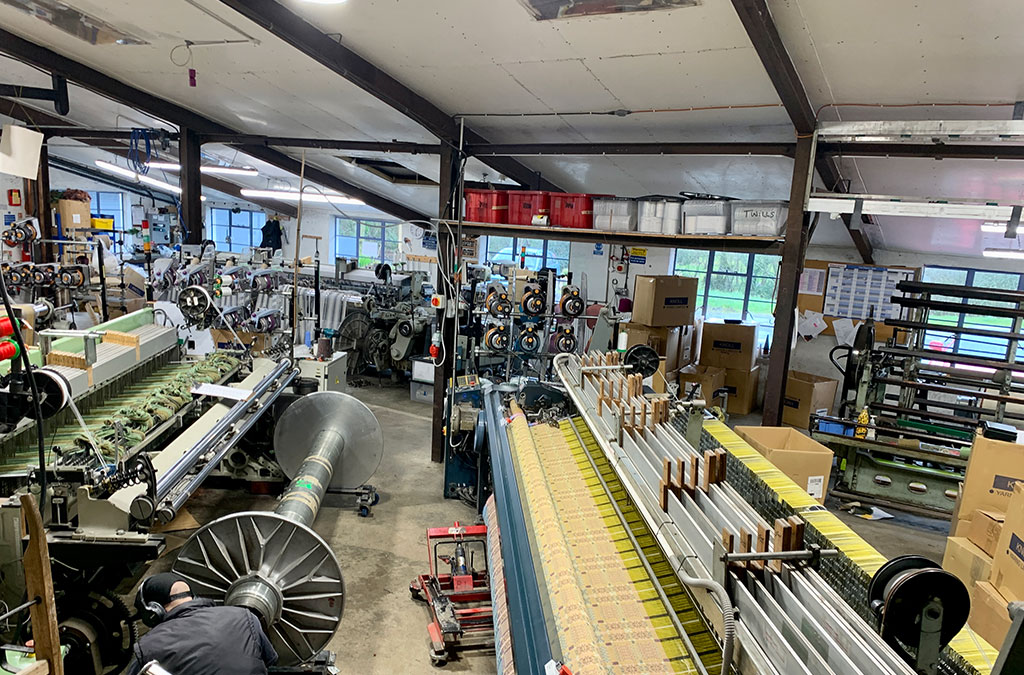
Melin Tregwynt
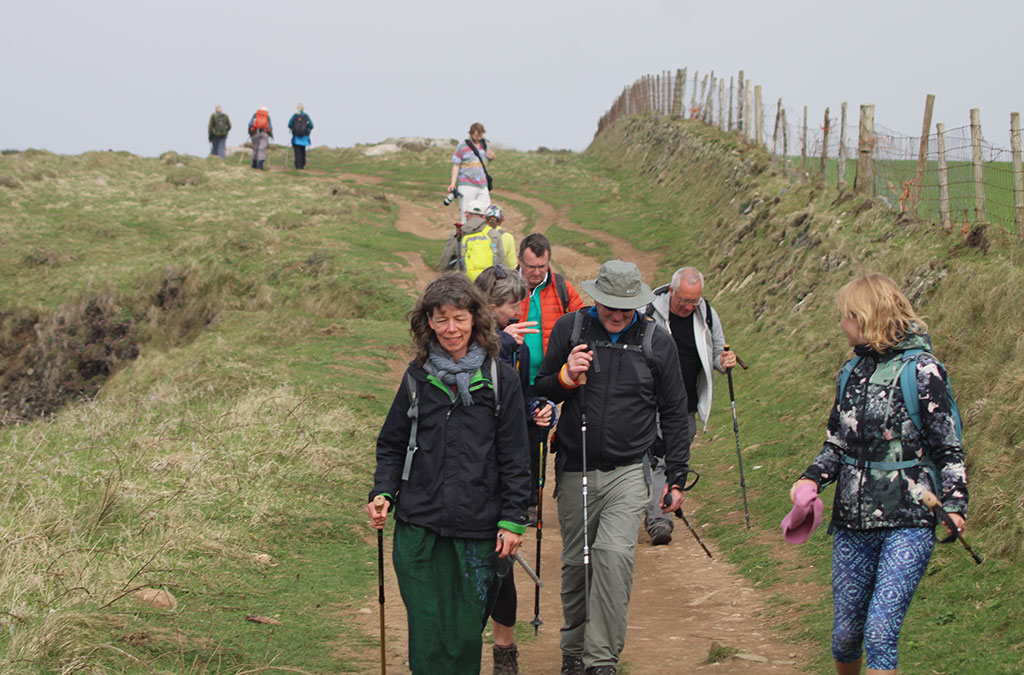
Pilgrims on the path
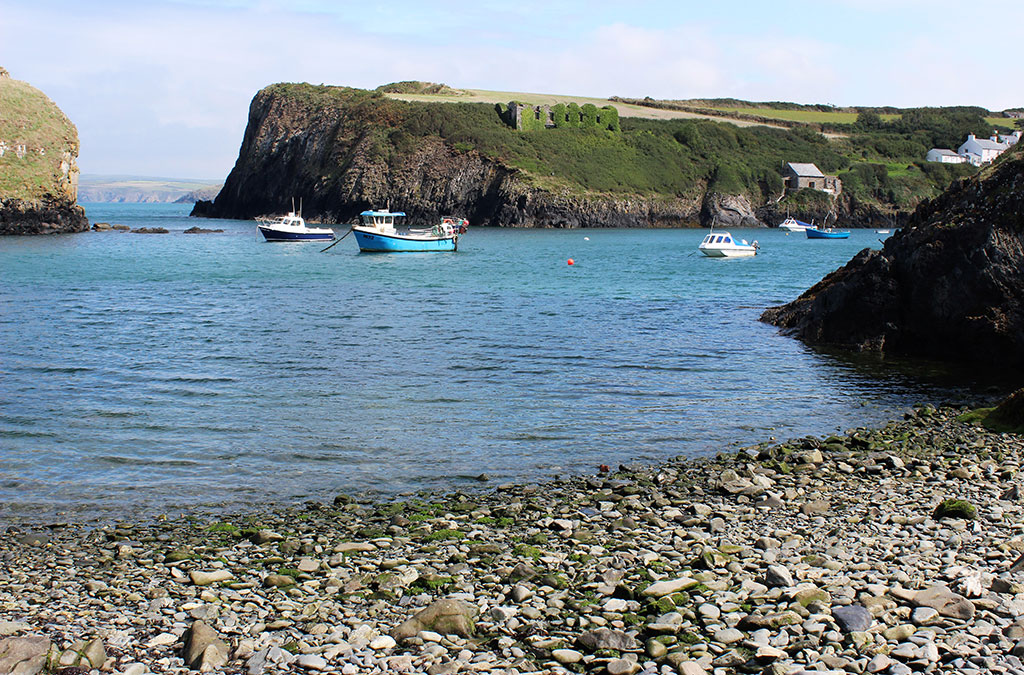
Abercastle
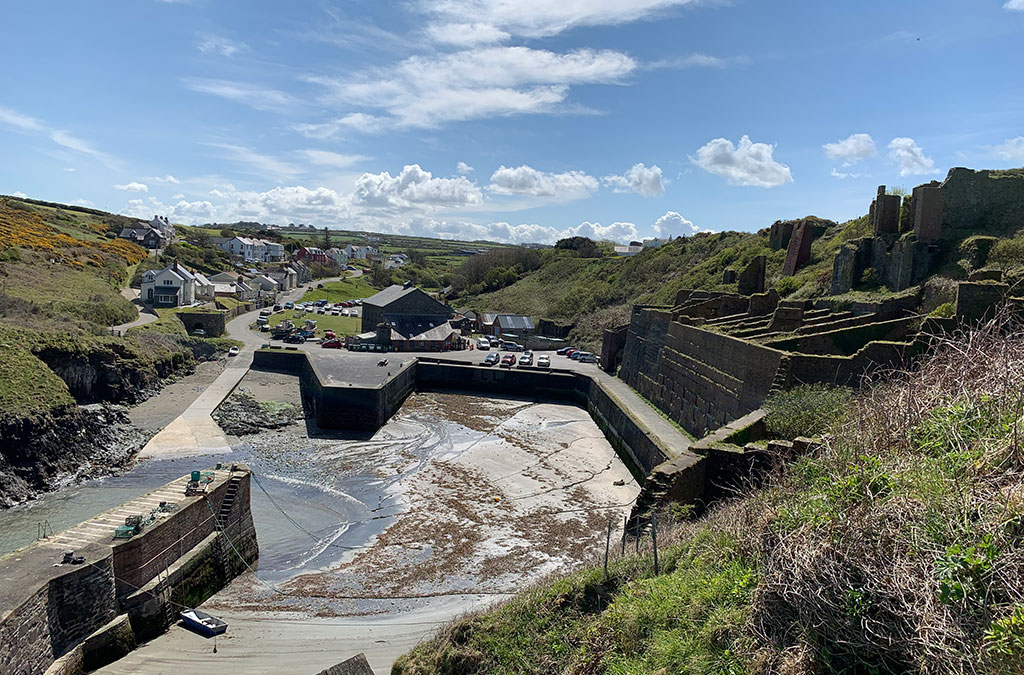
Porthgain
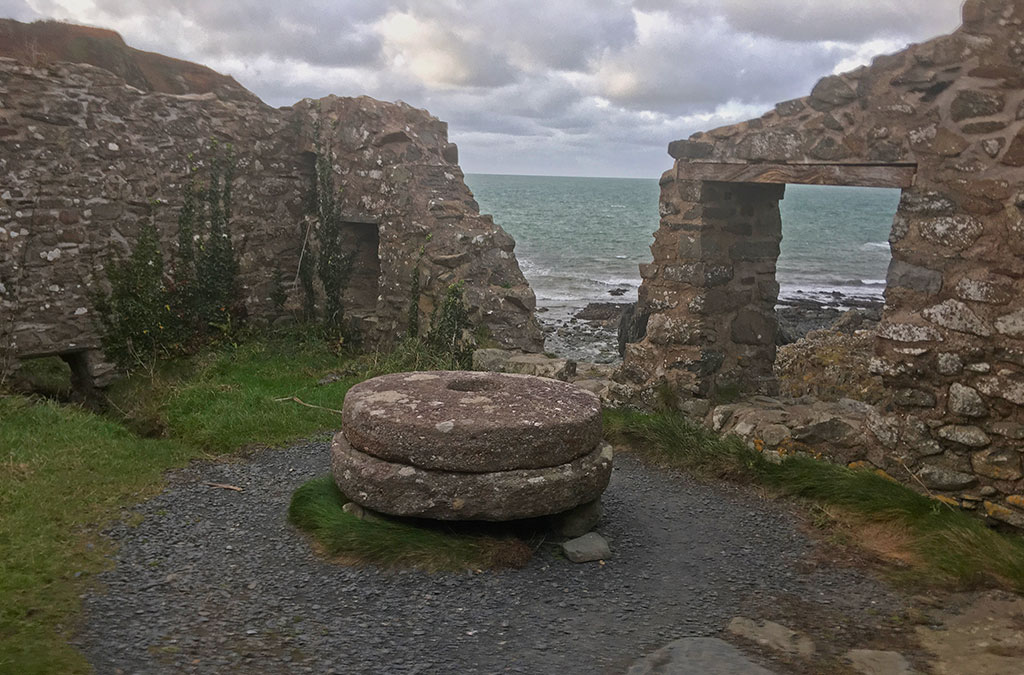
Melin Trefin
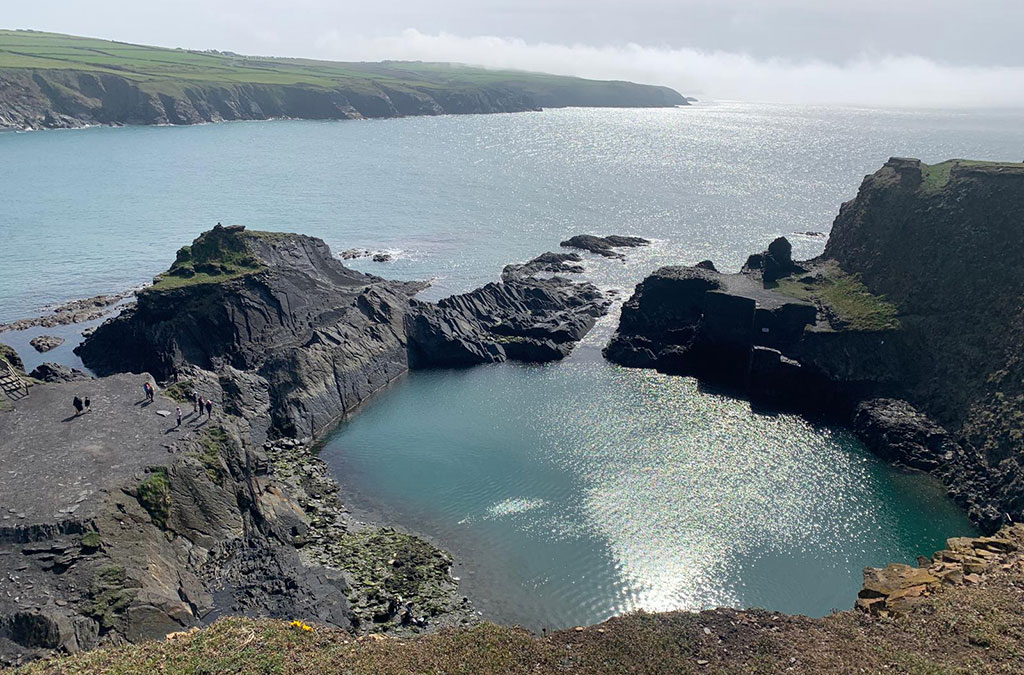
Blue Lagoon
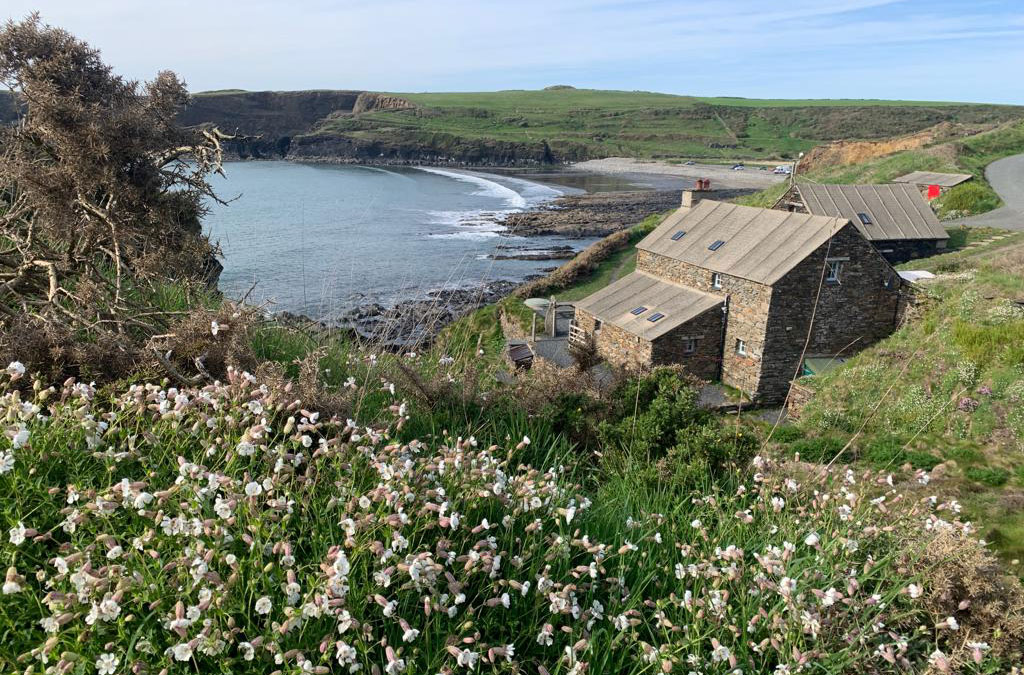
Abereiddy
Smugglers
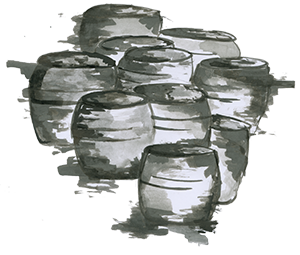
Many of the hidden coves tucked away on this rugged and remote coastline were havens for smugglers and pirates in the seventeenth and eighteenth centuries. A curious tunnel with no obvious agricultural purpose can still be seen in the hillside above Abermawr beach. Some people say this might have been a secret storage place for contraband such as wine, brandy or tobacco that needed to be hidden away from customs officers.
In 1713 one such smuggler by the name of Francis Hayman was arrested nearby after an armed cliff-top struggle. Even though he was brought to trial, he was immediately released by the judge who may have been bribed with a barrel of brandy from the smuggler for his trouble.
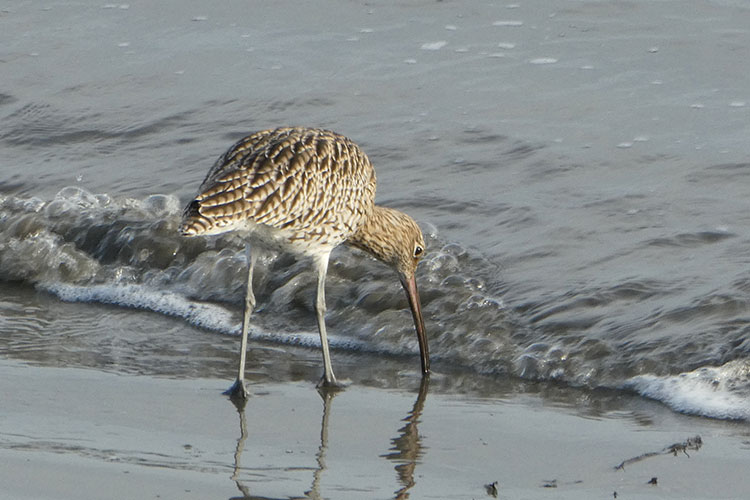
BIRDLIFE
The birdlife all along the Pembrokeshire Coast Path is exceptional with regular sightings of choughs, kittiwakes, gannets and other seabirds. Some of the nearby islands have breathtaking numbers such as the 40,000 pairs of gannets who nest on Grassholm each year.
Pictured here is a snipe who have slender sensitve bills with which they can sense their food in the mud without seeing it. They use a sewing machine action to search for invertebrates.
Sign up for our Newsletter
Be the first to know about guided events being offered along the route and all the latest developments along the route.

